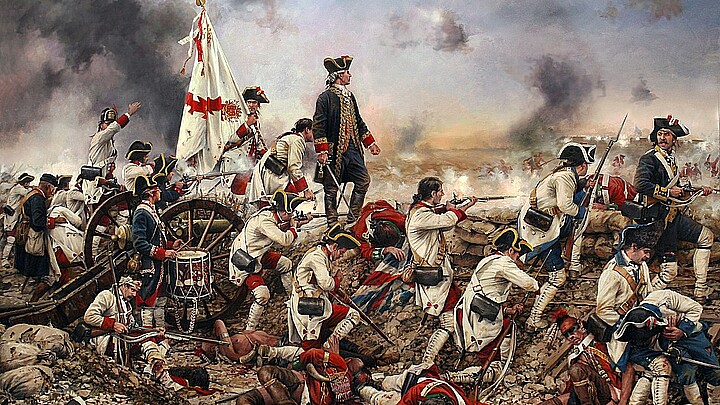Opinion & Reviews
Op-Ed: 2022 will bring more Biden 'shrink-flation'
Former economic adviser to Barack Obama and international economist Pippa Malmgren warned a group of investors that fiscal pump-priming and extreme monetary easing used by governments and central banks can help re-float weak economies. But there are major consequences
January 3, 2022 7:04am
Updated: January 3, 2022 8:48am
"No private embezzlers or bank robbers in history have ever plundered people's savings on a scale comparable to the plunder perpetrated by the fiscal policies of leftist governments." – Ayn Rand
Former economic adviser to Barack Obama and international economist Pippa Malmgren warned a group of investors that fiscal pump-priming and extreme monetary easing used by governments and central banks can help re-float weak economies. But there are major consequences. Flooding too much money into economies too soon can be worse than their intent to avoid a full depression.
While progressives stagnate growth with federal life support, producers adjust and readjust as the money supply increases. The ugliest word any government wants to hear nearing the midterms is "inflation." Yet there are economic signals that indicate politicians and central banks did too much. While politicians assure us there is no inflation, the devil in the details everywhere is "shrinkflation."
For years, the government and the Fed have used complex formulas to hide real inflation numbers. By ignoring the real Consumer Price Index, they continue to fool some of the people all of the time. Yet the two commodities that decimate consumer pocket books immediately are food and energy.
For average Americans, the cost of food and other consumables is their greatest weekly budgetary concern. People look under every rock for bargains and grocers know this. According to a recent survey by Dalhousie University, over 70% of shoppers say price is the top criteria when deciding what to buy at the grocery store. That's why grocers and producers are so obsessed with pricing.
"If you haven't been to a grocery store lately you are in for quite a shock." – Mary Jo Handspree
The U.S. retail food industry is comprised of foods sold at grocery stores, convenience stores, drug stores, and mass merchandisers. There are a large number of small family-operated neighborhood stores and independent grocers that serve local communities and rural areas throughout America.
The size and sales volume of grocery stores varies dramatically as well as their shelf prices. Small family-owned markets buy shelf stock from a "cash and carry" so their shelf prices are higher. The major food retailers own their warehouses; therefore their shelf prices are traditionally much lower.
The Consumer Price Index tracks data that is readily available from major chain stores and mass merchandisers. Yet the USDA claims small independent grocers make up about 35% of U.S. food industry sales. This has allowed the Fed and the government to deceive us about food-inflation for years.
“Everyone is entitled to his own opinion, but not to his own facts.” – Daniel Patrick Moynihan
Super Market Daily reports that most consumers think supermarkets make huge profits on food sales. Yet grocery store profit margins average about 2%. Grocers make their money on volume. Therefore, they only raise prices when they have to because their wholesale prices are increased.
The cost of processing in the food sector is what drives pricing at retail stores. Ingredients, energy costs, wages and benefits weigh heavily on food manufacturers trying to cultivate relationships with grocers and retain market shares. Profits are low and competition is high for the consumer's weekly grocery dollars.
"I went back to work because someone had to pay for the groceries." – Bette Davis
For years, to keep price points low, producers have used package "downsizing" to avoid raising retail prices. They do this on everything from chips, pasta, cookies and ice cream, to non-food items. Until recently, producers did this in small increments to maintain brand loyalty and profits.
Since food and energy prices are based on "futures" in commodity markets, when Biden slashed energy production retail food packages started shrinking faster than Biden signed executive orders. Recently, this has been taking place so often on every item on grocery shelves, consumer groups have given this practice a name: They label the biggest offenders "perpetrators of shrinkflation."
"Shoppers care more about price increases and less about quantity decreases." – John Fitzer
Former Massachusetts assistant attorney general Edgar Dworsky tracks the companies that shrink quantities without lowering prices on his website, Mouseprint. He calls this downsizing, but that is just a more mellow name than "shrinkflation." They are both deceptive ways companies increase their prices. This has proven highly effective in increasing profits and maintaining customer loyalty.
A recent Money newsletter revealed, "Consumers can tell instantly if they're used to paying $2.99 for a carton of orange juice and it goes up to $3.19. But if the container goes from 64 ounces to 59 ounces, they probably don't even notice it – even though they are purchasing the item more often."
Raising food prices to maintain profits is challenging for national sellers when the government is to blame. A recent study by The U.S. Food Institute estimates that over 4,000 grocery food products have been downsized since 2012. This began after the Great Recession with Barack Obama's audacious federal stimulus spending. Government is to blame but shoppers claim that the grocer is the villain.
"Democracy is a process which people choose the man who'll get the blame." – Bertrand Russell
When it comes to shopping and voting, consumers are irrational creatures. They elect politicians who spend too much money that causes inflation. When politicians claim there is no food-inflation and sizes shrink and shoppers buy more for less, more often, they blame producers and grocers?
Shrinkflation does not just apply to grocery and non food items. It is everywhere; at supermarkets, home centers, big box stores and any place you buy a packaged commodity. When consumers say this is "deceptive and crooked," they never blame it on the stimulus check they got and didn't need.
Politicians and the Fed point to increased buying trends to rationalize bad money policies. Yet they do not account for shrinkflaton? They use Common Core math and count "items purchased" rather than "ounces sold" for the same price. This is how they can tell voters that inflation is under control.
W. C. Fields told us, "Never give a sucker an even break." Anything the government gives voters for free they pay for. Government doesn't produce anything but misery. Producers, retailers, and insurance companies continue to find backdoor ways to increase prices when their cost of doing business goes up or the dollar falls in value. And people blame them, not those that they elected?
Janet Yellen, Biden's leftist Treasury secretary, is utilizing the same zero interest rates to finance Biden's spending spree that she used to float Obama's weak economy when she chaired the Fed. So get use to it. As long as shoppers get less for the same price, "shrinkfaltion is inflation" no matter what they tell the voters.
“What is it about the government and its agents and employees that they can lie to us with impunity, but we risk being sent to jail if we lie to them?” – Andrew Napolitano










